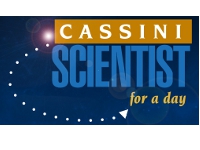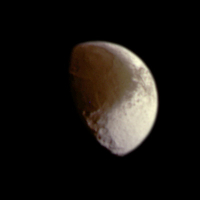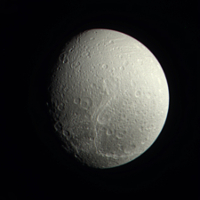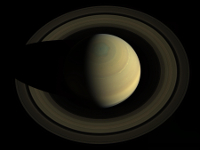Students investigate Saturn's secrets in Cassini competition
28 February 2014
The Cassini-Huygens mission has made important and exciting discoveries, often accompanied by amazing images, since arriving at the Saturnian system a decade ago. The scientific targets of Cassini – the planet, its moons and rings - are the inspiration behind the ‘Cassini Scientist for a Day’ competition, which allows school students to put forward their ideas for which of three potential targets they would choose to study, and why, while the spacecraft is in orbit around Saturn.
 |
Like the international Cassini team discussing how to use the mission’s time most efficiently, the students must create a convincing account of their scientific aims by researching the target and detailing what they want to find out during observations. The competition has grown to include students in countries all over the world. NASA JPL runs the contest in the United States and in Europe the competition is co-ordinated by ESA, with a national organiser and panel of judges in each country that competes.
Entrants to the competition were asked to write a 500-word proposal backing one of three targets for study. In 2013, students could focus on Saturn itself, or either of the moons Iapetus and Dione. Entries were received with scientific goals as diverse as explaining the polar vortex on Saturn, and using tectonic studies on Dione to improve earthquake preparedness on Earth. The Cassini mission will go on to image all three targets as it continues its scientific investigations.
 |
| Target 1: Iapetus, image taken for 'Cassini Scientist for a Day' competition 2013. Credit: NASA/JPL-Caltech/SSI |
 |
| Target 2: Dione, image take for 'Cassini Scientist for a Day' competition 2013. Credit: NASA/JPL-Caltech/SSI |
 |
| Target 3: Saturn, image taken for 'Cassini Scientist for a Day' competition 2013. Credit: NASA/JPL-Caltech/SSI/Cornell |
"It's great to see the next generation of scientists engaging with Cassini," said Nicolas Altobelli, ESA Cassini-Huygens Project Scientist. "To complete their essays, the students were required to consider their scientific goals and explain them clearly, just as scientists must do as part of their work to justify their observation requests on a large team like Cassini. In this way it really is like being a Cassini scientist for a day."
More than 800 students entered the competition, some of whom collaborated in teams of up to four people. Each participating country selected their national winners, all of whom will receive a selection of ESA-branded gifts as well as having their essays published on the ESA website. All participants receive a certificate recognising their contributions to the competition.
A full list of all the European winners can be found here.
The Cassini–Huygens mission is a cooperative project of NASA, ESA and the Italian Space Agency (ASI). Launched in 1997, the Cassini-Huygens spacecraft arrived in the Saturn system in July 2004. On 25 December 2004, the Huygens probe was released from the orbiter and parachuted through the atmosphere to the surface of Saturn's largest moon, Titan.
The Cassini spacecraft is undertaking an extensive exploration of the Saturnian system with its rings and many satellites. Cassini completed its initial four-year mission to explore the Saturn System in June 2008 and the first extended mission, called the 'Cassini Equinox Mission', in September 2010. A second extended mission, called the 'Cassini Solstice Mission' will continue until September 2017; this will allow scientists to study the Saturnian system until the summer solstice has passed in May 2017. By the time this new extension is completed, the Cassini mission will have covered (since it arrived in the system) one half of a Saturnian year.
NASA's Jet Propulsion Laboratory, a division of the California Institute of Technology in Pasadena, manages the mission for NASA's Science Mission Directorate, Washington, D.C
